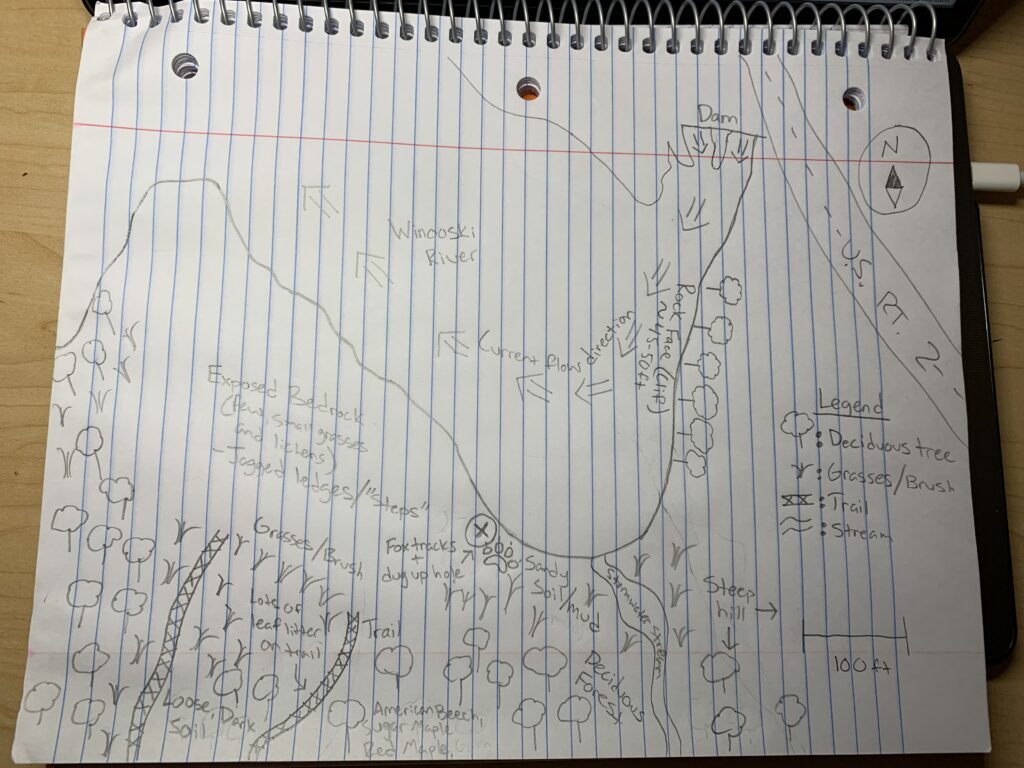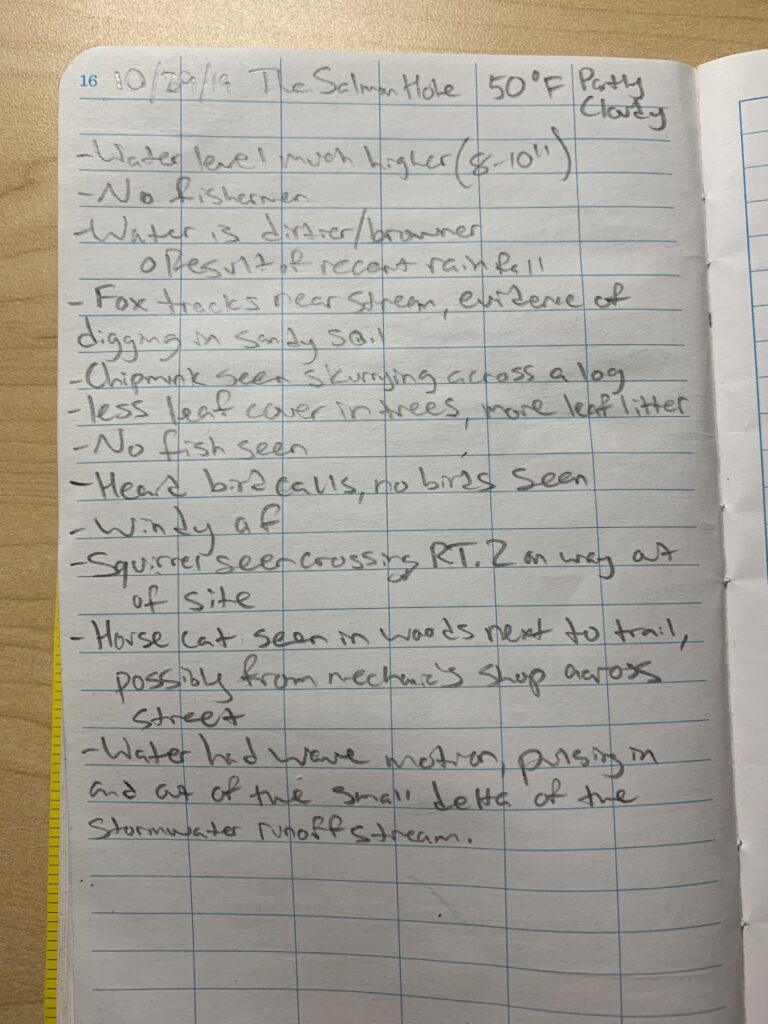Conor McCourt
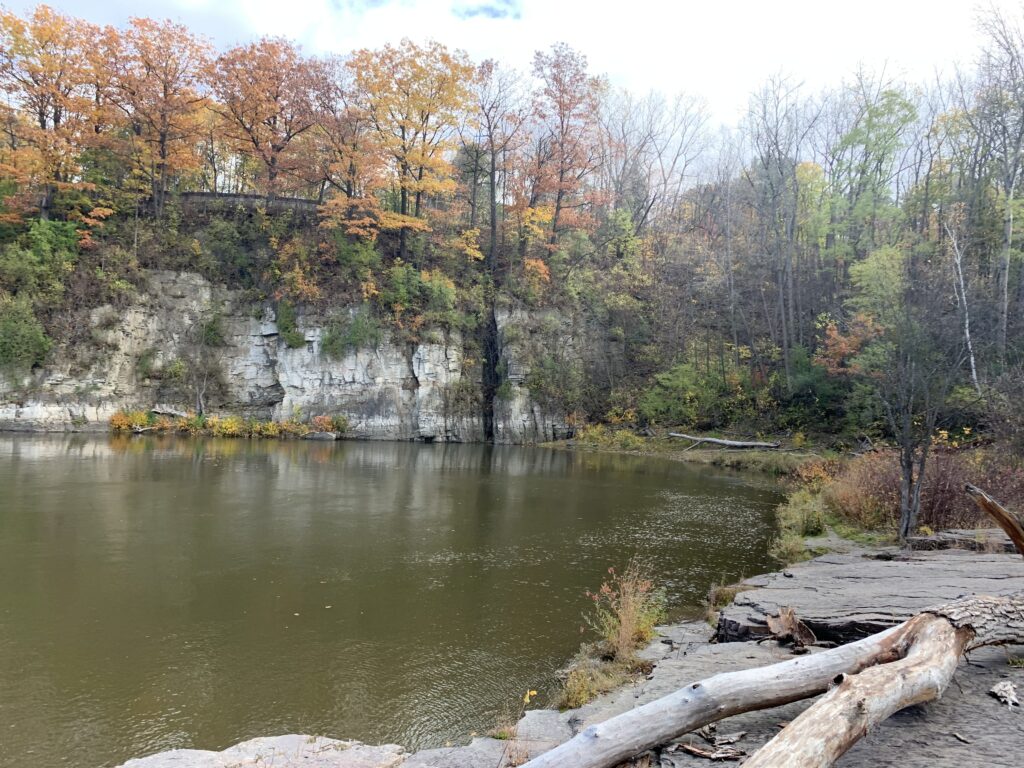
As soon as I exited the trail onto the first rock slab the first thing I noticed was the increased height of the water level, and the turbidity of the water. Increased runoff from the impervious surfaces up on the hill increases the flow of stormwater into the culvert and then into a fast flowing, straight-line stream running down the hill and into the river, washing away quite a bit of sediment in its path. The stream filled over its banks and started to erode at the loose soil bordering the stream, and along with leaf litter and sediment, human litter like cans, bottles, and even a tennis ball ended up flowing down the stream.
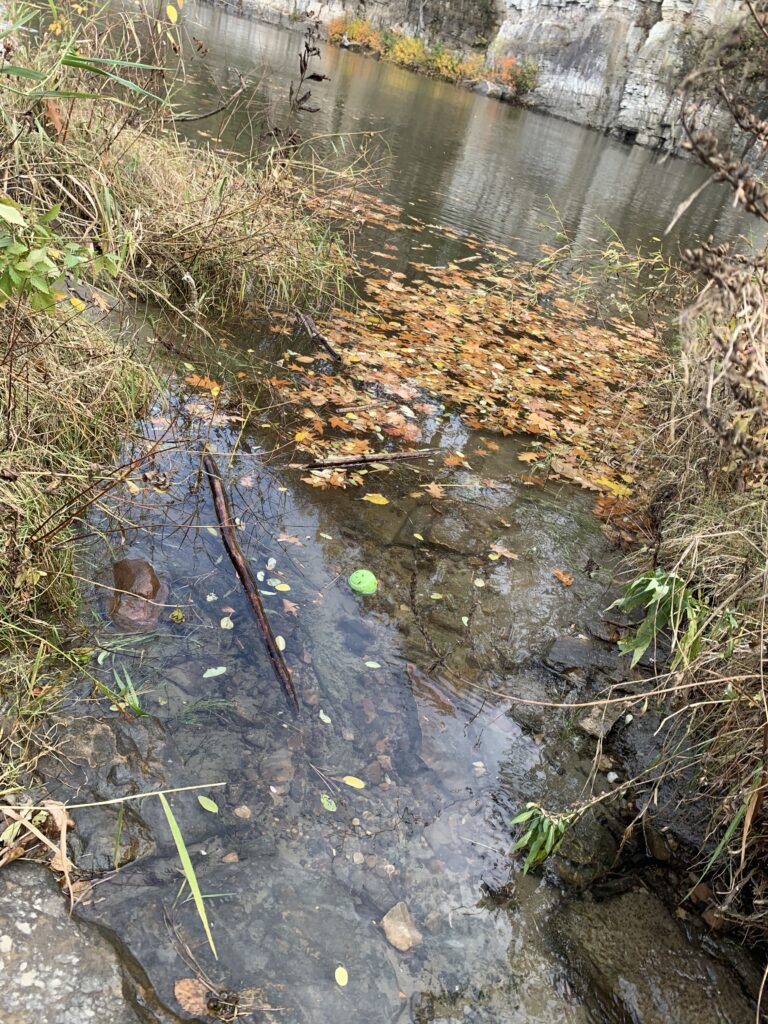

The delta where the stream met the Winooski River had a sort of tidal motion where water was flowing in and out of the delta because of the increased water flow in the river and the stream. In the sandy soil on the water’s edge there was sign of a fox traveling along a path through the tall, dead grass and digging a hole in the sand.
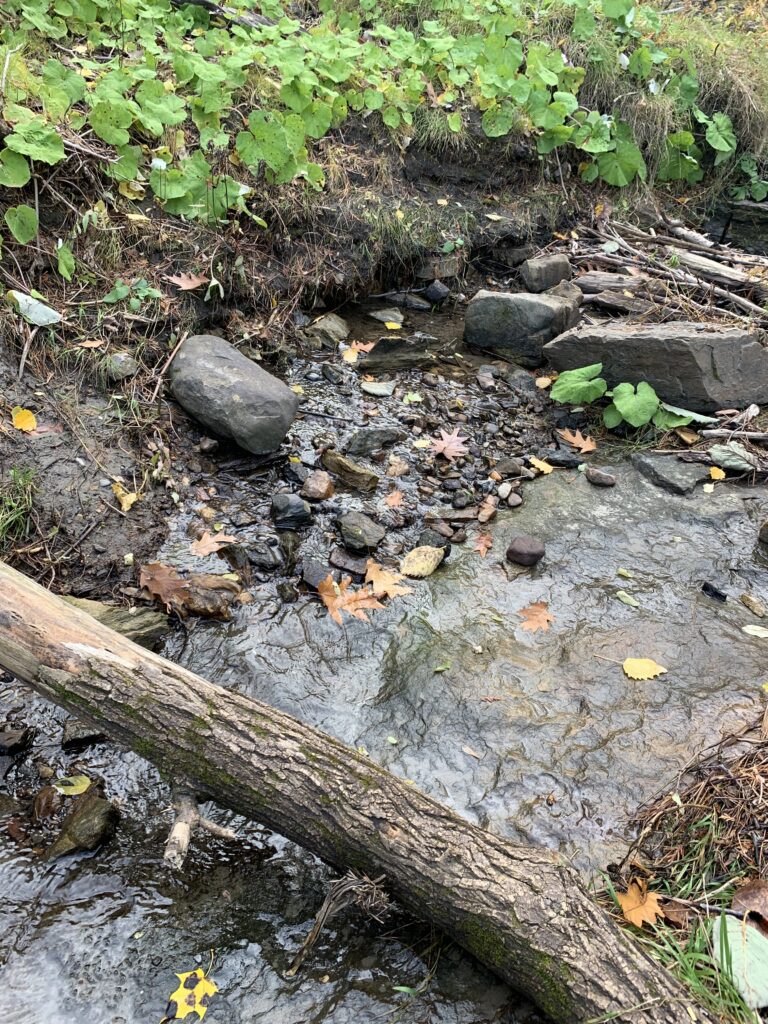
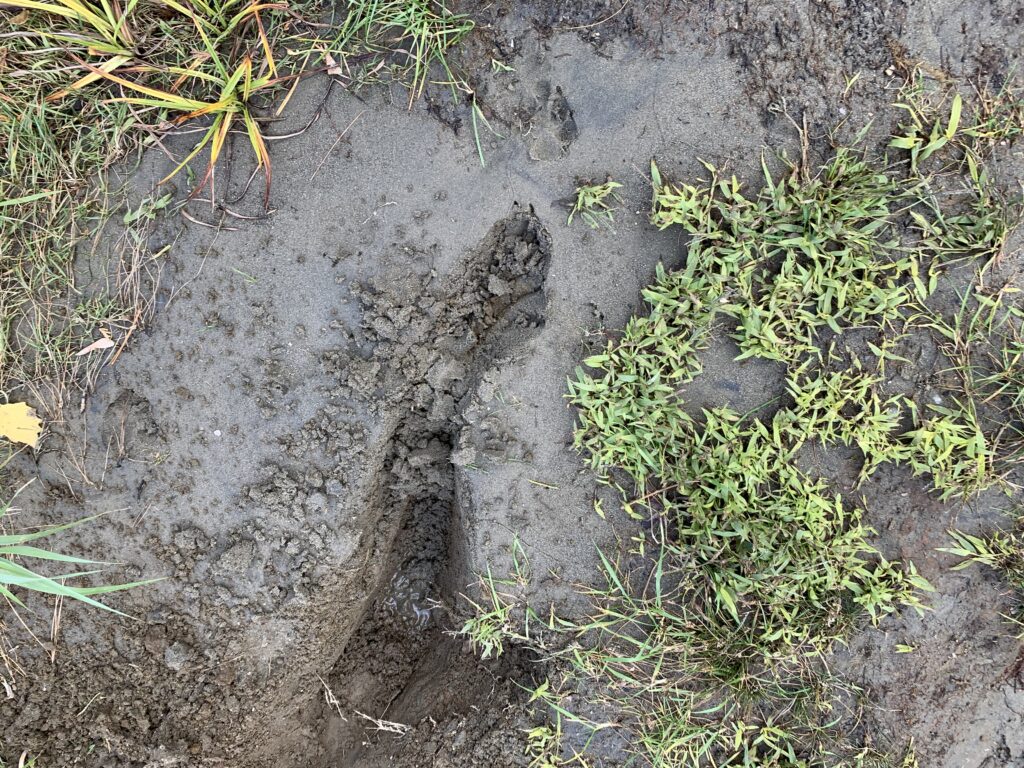
Because of the recent rainfall, the compacted sandy soil allowed for footprints to easily be seen. Multiple chipmunks were seen scurrying across the trail on my walk down to the site as they were foraging for food before the freezing temperatures and snow possibly hit next week, and a house cat was seen prowling through the leaves looking for that unsuspecting chipmunk. I could hear maybe two species of birds calling in the distance, but there was a significant decline in the amount of birds I could see and hear. About 70% of the trees and other deciduous plants had lost their leaves, making the trail wet and slippery with all the fallen leaves, and allowing more sunlight to penetrate the canopy and reach the trail, something I noticed to be pretty dark the past few visits. However, I did notice that plants trees closer to the water retained their leaves longer than trees and plants up the hill closer to the road. There are no coniferous trees at this site, the soil on the hill is very dark and loose, and the sandy soil near the water’s edge sits on a slab of bedrock no more than 8 inches below, too shallow for any large vegetation to grow.
